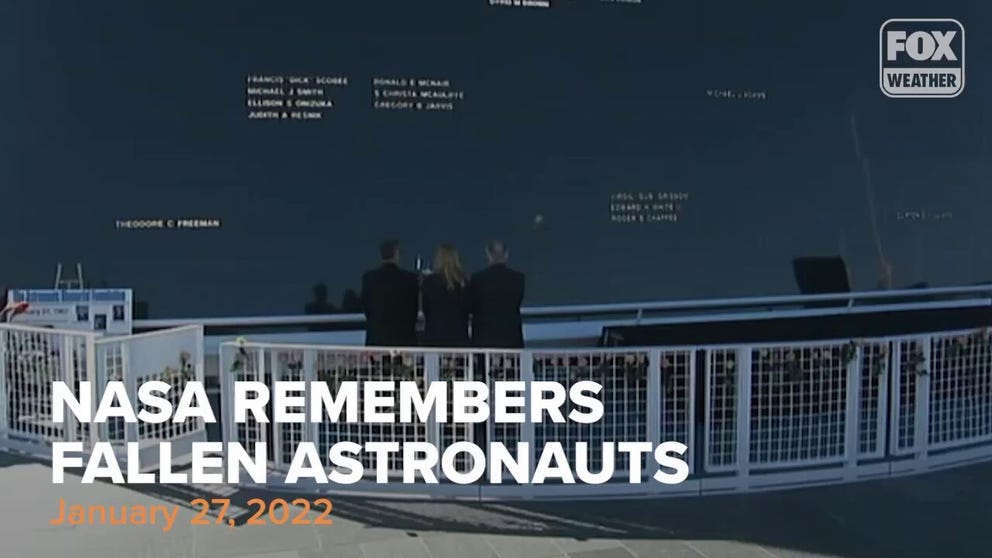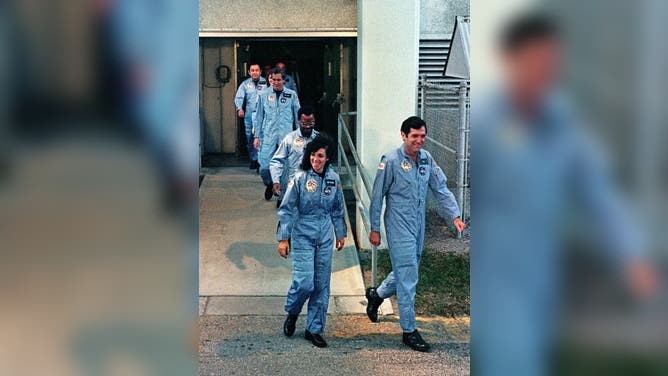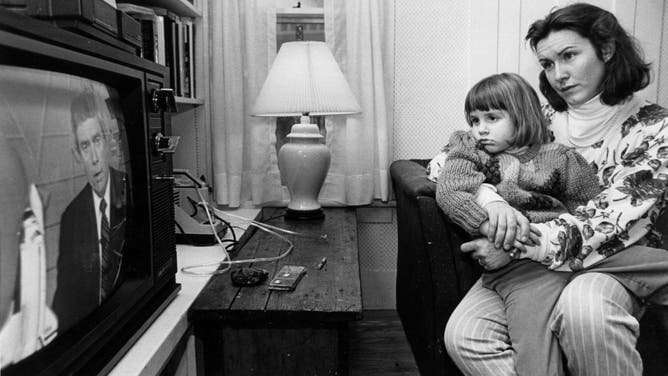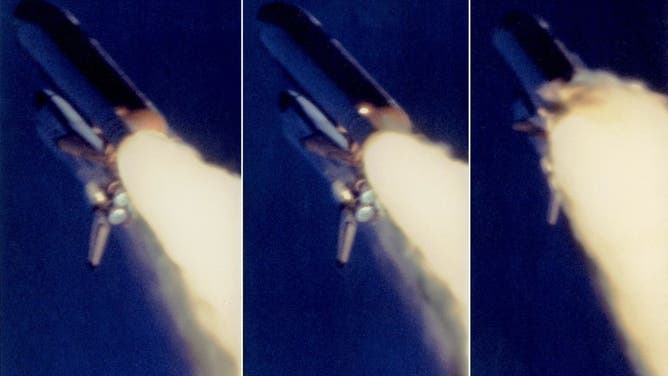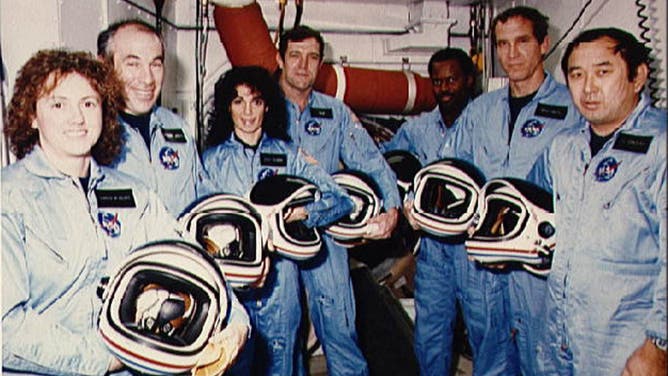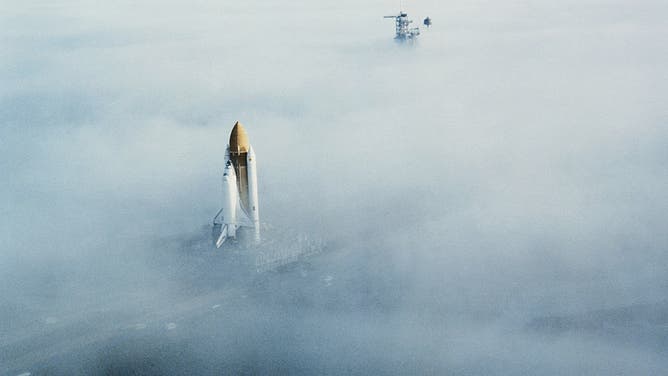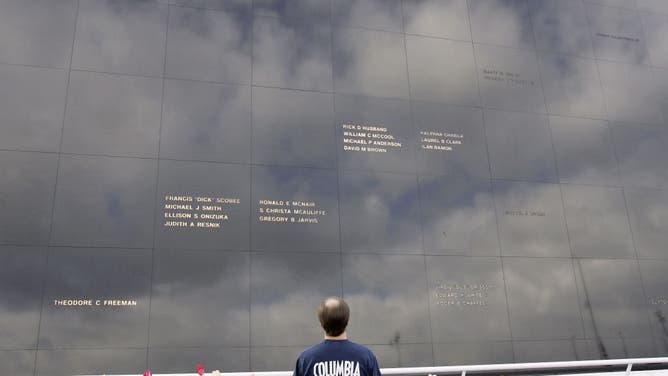Day of Remembrance honors lives lost in the process of space exploration
NASA remembers Apollo 1, Challenger and Columbia astronauts
NASA remembers fallen astronauts
Every January NASA hosts a remembrance day to honor the astronauts who died during the Challenger, Apollo 1 and Columbia tragedies.
KENNEDY SPACE CENTER, Fla. – Winter every year marks a somber time in spaceflight as NASA remembers the astronauts who died while furthering human space exploration.
Three of the most tragic events in spaceflight occurred between the end of January and early February across five decades. NASA will pay tribute to their legacies during the agency's annual Day of Remembrance this Thursday.
NASA Administrator Bill Nelson will lead an observance at Arlington National Ceremony in Virginia. Events are also held at Kennedy Space Center, Johnson Space Center, Marshall Space Flight Center and Glenn Research Center.
The American Space Museum in Titusville, Florida, also hosts its annual Astronaut Memorial Ceremony to honor the legacy of the astronauts. The event happens at Sand Point Park on Jan. 29 with remarks from astronaut Winston Scott and a 21-gun salute.
Watch a replay of the ceremony at Kennedy Space Center below:
Jan. 27 marks the 55th anniversary of the Apollo 1 tragedy when three astronauts – Lt. Col. Virgil "Gus" Grissom, Lt. Col. Edward H. White and Roger B. Chaffee-- were killed in a flash fire inside the Apollo command module during a test on the Florida launchpad. The 1967 fire and the investigation later led to significant design and engineering changes to the Apollo program and new safety procedures.
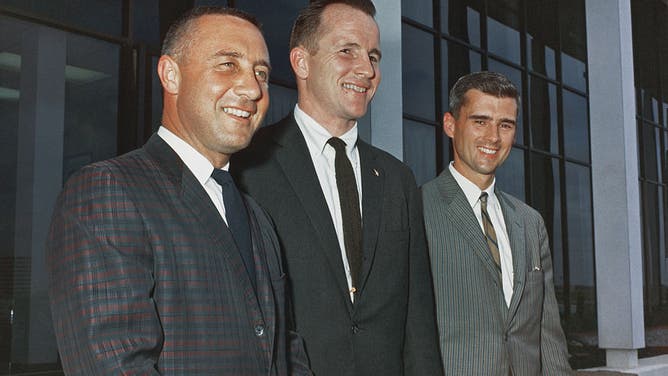
The prime crew for Apollo 1, scheduled as the first manned Apollo space flight, at a press conference at the Manned Spacecraft Center, Cape Canaveral, Florida, 21st March 1966. Left to right: Virgil I. Grissom, Edward H. White II and Roger B. Chaffee. All three men were killed in a cabin fire during a launch pad test on January 27, 1967. (Photo by Space Frontiers/Getty Images)
(Getty Images)
NASA TARGETING SPRINGTIME LAUNCH FOR ARTEMIS-1 MOON ROCKET
Grissom was among the original Mercury 7 astronauts and a veteran of the Mercury and Gemini missions. White performed the first American spacewalk. Apollo 1 would have marked Chaffee's first spaceflight.
A ceremony at the Space Mirror Memorial at Kennedy Space Center Visitor Complex on Thursday was attended by Grissom's brother, Lowell Grissom and Chaffee's daughter, Sheryl Chaffee.
Decades later, NASA's space shuttle program would experience two devastating failures and the loss of 14 astronauts during the program's life.
On Jan. 28, 1986, 73 seconds after liftoff from Kennedy Space Center, space shuttle Challenger exploded. The seven astronauts part of the STS-51L mission were killed after the explosion, including Michael J. Smith, Francis "Dick" Scobee, Ronald McNair, Ellison Onizuka, Christa McAuliffe, Gregory Jarvis and Judith A. Resnik.
McAuliffe, of New Hampshire, was selected through NASA's teacher in space project and planned to educate school children from space. Her backup, Barbara Morgan, would become NASA’s first educator-astronaut, flying on space shuttle Endeavour in 2007.
The Astronaut Memorial Foundation was founded after the Challenger accident to honor fallen astronauts and those who died furthering human spaceflight.
Even though three spaceflight tragedies occurred during the winter months, Challenger is the only event tied to the weather. It was a bitterly cold January day for Florida on launch day, with temperatures below 40 degrees.
The investigation into the Challenger explosion found that the loss was caused by a failure in the joint between two lower segments of a solid rocket motor. An O-ring seal returned to its uncompressed shape during the 36 degrees Fahrenheit weather, causing the joint to fail.
As a result, the space shuttle solid rocket motor booster seal and joint were redesigned to withstand all weather conditions for liftoff.
This year marks the 36th anniversary of the Challenger tragedy.
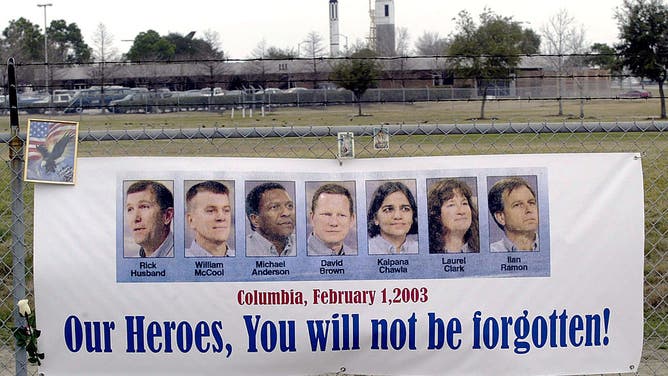
A banner showing the photos of the Columbia space shuttle crew hangs from a fence near a makeshift memorial set up at one of the gates of the Houston Space Center in Houston, Texas, February 4, 2003. (Photo: JAMES NIELSEN/AFP/GettyImages)
(Getty Images)
Another spaceflight loss happened on Feb. 1, 2003, when the space shuttle Columbia broke upon its return to Earth from space, killing the seven astronauts on the orbiter. Although the failure happened on the way home, the catastrophic event was caused during launch when falling foam from the shuttle's external tank hit the panels on the underside of Columbia's left-wing, ultimately causing the breach that led to the failure.
NASA Astronauts Rick Husband, William McCool, David Brown, Laurel Blair Salton Clark, Michael Anderson, Kalpana Chawla and Israeli Space Agency astronaut Ilan Ramon, were lost about 15 minutes before Columbia was scheduled to land at Kennedy Space Center.
It has been 19 years since the Columbia disaster.
The space shuttle program would end in 2011, and until 2020 NASA relied on the Russian space agency Roscosmos to fly its astronauts to and from the International Space Station. Now, American, European and Japanese astronauts launch on the Crew Dragon, a SpaceX spacecraft. The astronauts will have a second American spacecraft option to the ISS after Boeing completes its orbital test flight of the Starliner spacecraft, which is expected to happen later this year.
